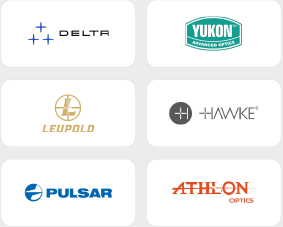Rifle Scopes
Validate your login
Sign In
Create New Account
Forgot Password
-
February 03, 2021
Everyone has their own method of how to Zero their Thermal Weapon Scope because let's face it, it’s not the easiest of tasks.
So, I am going to share a few tried and tested methods that I think works best.
-
Glen Padgham - February 03, 2021
Wow! What we would give to be able to visit the States this year and partake in one of the Vortex Edge Training days.
Following their success during 2020, Vortex has stepped-up, going bigger and better than before, offering a one-of-a-kind Shooting experience.
-
Adrian Pearce - January 29, 2021
Often overlooked, there is a wide range of fantastic Compact Scope options available in today's market, where size is an important factor in choosing an Optic to suit the outfit, especially common in Air Rifles and Rimfires, where the overall length of the Scope can create problems.
Below, I've provided a list of some of the top-picks to consider, which are available from Optics Warehouse.
-
Adrian Pearce - January 26, 2021
Nitrogen is used in Rifle Scopes along with many other Optics; Binoculars, Spotting Scopes etc.
Quite simply, this is done to create a positive pressure to remove any ambient air laden moisture/oxygen that is evident in the manufacturing process, which would then become trapped, and be far more susceptible to cause issues such as internal fogging.
-
December 18, 2020
One common problem that your average Shooter often overlooks is fitting the Scope level and correctly.
The Wulf Reticle Leveling System is a must-have piece of kit when mounting your Optics to any Rifle.
-
Adrian Pearce - November 17, 2020
A very small but invaluable piece of equipment that is more than often overlooked is the Bubble Level.
It's simple. If you intend on shooting at longer distances with a modern scope, let’s say beyond 400 meters, then yes, you should use a Bubble Level.
-
Adrian Pearce - November 12, 2020
Brightness is a product of the Exit Pupil (EP) diameter and the Anti-Reflection Coatings.
The EP is the little circle of light seen in an eyepiece held approximately 18inches from the eye, aimed at a bright wall or sky.
Its diameter is determined by the following equation:
Objective Lens Diameter/Scope's Magnification = Exit Pupil Diameter.
-
Glen Padgham - November 12, 2020
The X503 is a very stable scope in temperature and very snappy on the parallax, providing quick and precise range finding capabilities.
With all these points in mind, this would be my scope of choice if I was not using my Delta Styker 5-50x56. -
Glen Padgham - June 26, 2020Paul Howe aka The Chief provides a short introduction to what Airsoft is, how it's played and the types of kit associated with this popular sport.
-
Shaun Ellis - May 20, 2020
IOR Recon, an honest review by Paul Ford of Fieldsport Cymru.
-
Shaun Ellis - August 16, 2017
These are our top picks for Air Rifle Field Target Shooting. We've chosen these based on our experience of using these scopes in the field.
In field target shooting the targets are set out from 10 to 55 yards, and generally have hit zones in 15mm, 25mm and 45mm. Accurate and consistent parallax is important in field target shooting for you to be able to adjust your elevation. This could be done with hold over or 'dialled in' methods. The most common dialling measurements are 1/4 inch, 1/8 inch and 0.1 MRAD.
As a general rule of thumb, scopes with a higher magnification will have a smaller depth of view. This gives you a clearer indication of target range. However, high magnification needs very good quality glass, so cheaper scopes may not give great clarity at full magnification but will work great at lower magnifications.
Reticle choice is a big part of choosing your scope, and it comes down to personal preference. Some people prefer and 'uncluttered' view and might






